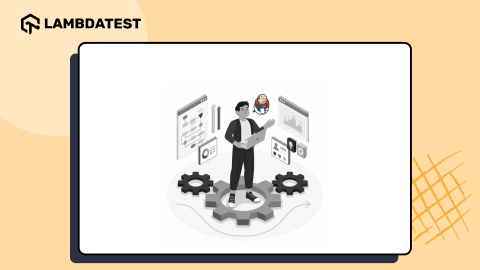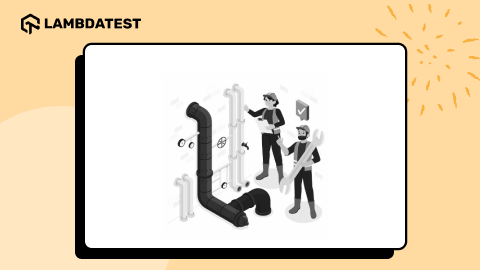DevOps vs Agile: What Are the Similarities and Key Differences
Veethee Dixit
Posted On: July 23, 2024
![]() 63481 Views
63481 Views
![]() 11 Min Read
11 Min Read
DevOps vs Agile are two distinct software development methodologies aimed at maximizing efficiency and speed in product releases. Agile gained prominence in the 2000s, revolutionizing product development practices, particularly in software. However, it initially overlooked the operational aspects of product deployment and management, prompting the need for DevOps to bridge this gap.
As many organizations adopt both DevOps and Agile methodologies, it becomes crucial for product managers and their teams to understand the differences between DevOps vs Agile to use each methodology effectively.
What Is DevOps?
DevOps is a development methodology emphasizing collaboration, integration, and communication among IT professionals to facilitate rapid product deployment. It promotes a culture of collaboration between development and operation teams, enabling faster and automated code deployment to production. DevOps aligns IT operations and development to enhance the speed of delivering services and applications, driving business competitiveness and customer service levels.
It offers specific benefits across three key categories: business, cultural, and technical. Business benefits include improved trust and team collaboration, resulting in stable operations and faster delivery. Cultural benefits lead to more efficient and productive teams, ultimately enhancing customer satisfaction. Technical benefits manifest in quicker problem resolution, continuous delivery, and reduced complexity, enabling faster and higher-quality code deployments compared to traditional methods.
Some of the other benefits of DevOps are mentioned below.
- Trust in Collaboration: DevOps fosters shared transparency and responsibility, enabling quicker feedback and problem-solving, reducing finger-pointing and misaligned priorities.
- Smart Work and Fast Releases: Teams practicing DevOps release deliverables more frequently with higher stability and quality, thanks to automation and streamlined processes.
- Accelerated Resolution Time: Seamless communication and transparency in DevOps enable quick issue resolution, minimizing downtime and improving customer satisfaction.
- Better Management of Unplanned Work: DevOps enables clear prioritization and efficient handling of unplanned tasks, reducing distractions and enhancing productivity.
- Dependable Resolution of Issues: DevOps ensures swift response and continuous improvement through frequent small changes, replacing traditional waterfall models with agile operations.
- Better Organizational Flexibility: DevOps breaks down departmental barriers, promoting alignment and cooperation across global teams and enhancing business agility and consistency.
- Fostering Creativity through Automation: Automation in DevOps frees up time for innovation, encourages cross-team collaboration, and supports continuous improvement and creativity.
What Is Agile?
Agile is an iterative software development and project management approach emphasizing customer feedback, collaboration, and rapid releases. It enables development teams to react and adapt to changing customer needs and market conditions through upfront design and planning followed by development in small increments. Continuous stakeholder collaboration and methodologies like eXtreme Programming (XP) and Scrum support quick adaptation to changes and frequent releases of usable product versions, contrasting with traditional waterfall models.
Preparing for a Scrum Master role involves understanding Agile methodologies deeply. Scrum, a popular Agile framework, is often a focal point in many Scrum Master interview questions. Candidates should be well-versed in Scrum principles, roles, and ceremonies to effectively manage Agile projects and address common questions in interviews.
To learn more about Agile methodologies, follow this blog on Agile vs Waterfall and understand how each SDLC model differs.
Here are some benefits that Agile offers:
- Higher Quality Product: Agile prioritizes working software over extensive documentation, enabling modular software delivery and rapid updates, including security and feature enhancements.
- High Customer Satisfaction: Agile involves customers in the decision-making process, ensuring products meet their requirements quickly, reducing time-to-market, and fostering repeat business.
- Enhanced Business Value: Agile focuses on maximizing customer value through iterative cycles that align deliverables with customer needs, empowering teams at all levels to prioritize effectively.
- Adaptability: Agile emphasizes flexibility and responsiveness to changes, enabling teams to adjust priorities and plans quickly to meet evolving client demands.
- Improved Control: Agile provides transparency, quality control features, and integrated feedback mechanisms that enhance project management control and ensure high-quality outcomes.
- Fewer Risks: Agile environments support skilled individuals by fostering creativity, collaboration, and skill development, reducing organizational inefficiencies, and increasing personal responsibility.
 Note
NoteCombine the strengths of DevOps and Agile methodologies to enhance your CI/CD processes. Try LambdaTest Today!
So far, we have learned about DevOps and Agile and their benefits. Further, we will learn the key differences between DevOps vs Agile. While they are often interconnected and implemented in projects, they also have distinct differences, as we will learn below.
Key Differences Between DevOps Vs Agile
DevOps and Agile are pivotal methodologies in the Software Development Life Cycle (SDLC), each with unique focuses and benefits. Agile emphasizes iterative development, customer feedback, and collaboration within teams. In contrast, DevOps extends this collaboration to operations, ensuring a smooth, Continuous Integration and Continuous Delivery (CI/CD) process.
Below are the key differences that set these methodologies apart.
| Parameter | DevOps | Agile |
|---|---|---|
| Definition | It is a practice that brings development and operation teams together. | It refers to the continuous iterative approach, focusing on collaboration, customer feedback, and small and rapid releases. |
| Purpose | It aims to manage end-to-end engineering processes. | Its purpose is to manage complex projects. |
| Scope | It is a company-wide approach to software deployment. | It focuses on developing single applications or projects. |
| Task | It focuses on continuous testing and delivery. | It focuses on constant changes and iterative development. |
| Team Size | It involves larger teams that integrate all stakeholders. | The teams are typically small, facilitating faster movement. |
| Team Skill Set | It divides and spreads skill sets between development and operations teams. | It emphasizes a wide variety of skills among all team members. |
| Implementation | It lacks a single framework but focuses on collaboration. | It can be implemented using frameworks like Scrum, Kanban, etc. |
| Duration | It aims for continuous delivery, ideally daily or hourly. | It works in short cycles called sprints, typically less than a month. |
| Target Areas | It targets end-to-end business solutions and fast delivery. | It primarily focuses on software development. |
| Feedback | It relies on internal team feedback for improvement. | It receives feedback directly from customers. |
| Shift Left Principle | It supports both “shift left” and “shift right” principles. | It supports only the “shift left” principle. |
| Focus | It focuses on operational and business readiness. | It focuses on functional and non-functional readiness. |
| Importance | It emphasizes developing, testing, and implementation equally. | It prioritizes developing software as per requirements. |
| Quality | It enhances quality with automation and early bug detection. | It ensures quality through iterative improvements. |
| Tools | Its tools include Puppet, Chef, AWS, etc., for automation. | Its tools include Bugzilla, JIRA, etc., for project management. |
| Automation | It prioritizes automation for efficient software deployment. | It does not emphasize automation as much as DevOps. |
| Communication | Its communication includes specs and design documents. | Its communication revolves around daily Scrum meetings. |
| Documentation | It values process documentation for operational readiness. | It prioritizes a working system over comprehensive documentation. |
| Priority | It emphasizes the continuous deployment of software. | It prioritizes the continuous delivery of software. |
| Implementation Frameworks | DevOps frameworks include CAMS, CALMS, DORA, etc. | Its frameworks include Scrum, Kanban, XP, etc. |
| Alternatives | It contrasts with silo-based development and deployment. | It contrasts with Waterfall as a traditional alternative. |
Now that we have understood the key differences between DevOps vs Agile, it is important to learn when to use which approach to improve the project result.
When Do DevOps and Agile Work Together?
DevOps complements Agile in two main ways: as a missing puzzle piece that enhances Agile practices and as an evolved version of Agile itself. It integrates Agile innovations into operational processes, amplifying feedback loops and facilitating flawless communication between and across teams. Scrum supports this communication through practices like retrospectives, planning meetings, and daily stand-ups.
Integrating DevOps and Agile methodologies enhances business performance, leading to significant revenue growth. It simplifies release processes, improves product offerings, and maximizes collaboration. Implementing both methodologies supports the seamless implementation of CI/CD pipelines, ensures higher value and lower risks in releases, and offers benefits such as quicker issue resolution, fewer bugs, increased visibility, improved customer satisfaction, and higher-quality products.
However, implementing DevOps and Agile practices together, project teams, developers, or testers might face challenges due to the different sets of tools required to leverage the full capabilities of each approach. Maintaining continuous testing across multiple environments and devices can be resource-intensive and time-consuming. Scaling test processes to meet the demands of frequent releases and high-performance standards can also be challenging.
Organizations or teams can use any cloud-based platform that helps integrate project management tools and facilitates continuous testing to accelerate the feedback cycle and improve testing efficiency.
One such cloud-based platform is LambdaTest. This platform helps you integrate with various project management tools to help manage your project smoothly. LambdaTest is an AI-native test execution platform that allows you to conduct manual and automated continuous testing at scale across over 3000 real devices, browsers, and OS combinations.
To enhance your CI/CD process via DevOps practices, teams can leverage the LambdaTest HyperExecute– an advanced AI-powered testing platform created to enhance the speed and efficiency of automation testing.
Integrating HyperExecute into your CI/CD pipeline can significantly accelerate test execution, providing swift feedback on code modifications. It empowers you to manage and execute extensive test suites concurrently, optimizing resource allocation to lower infrastructure expenses while ensuring robust and consistent tests across diverse environments, elevating overall software quality.
Conclusion
In conclusion, while Agile methodologies have brought significant successes to many teams, others have faced challenges due to misunderstandings or incorrect implementations. Incorporating DevOps can effectively address these gaps, offering a synergistic approach to enhance software development quality and speed. Embracing DevOps and Agile practices positions teams for greater success in achieving their development goals.
Frequently Asked Questions (FAQs)
Is DevOps possible without Agile?
Yes, DevOps can be implemented without Agile. DevOps focuses on continuous integration, continuous delivery, and collaboration between development and operations, which can be applied independently of Agile methodologies. However, combining DevOps with Agile can maximize efficiency and streamline development and deployment.
Does DevOps require coding?
Yes, DevOps typically requires coding skills. Automating tasks such as infrastructure provisioning, configuration management, and continuous integration/continuous delivery (CI/CD) pipelines involves scripting and coding. Knowledge of languages like Python, Ruby, and shell scripting is often necessary.
Will AI replace DevOps and Agile processes?
No, AI will not replace DevOps and Agile processes. AI can enhance these processes by automating repetitive tasks, providing insights, and improving decision-making. However, the human element of collaboration, problem-solving, and strategic planning in DevOps and Agile cannot be entirely replaced by AI.
When not to use DevOps?
DevOps may not be suitable for small projects with limited scope, projects with infrequent releases, or organizations not ready for the cultural and structural changes required for successful DevOps adoption. In such cases, the overhead of implementing DevOps practices may not justify the benefits.
Got Questions? Drop them on LambdaTest Community. Visit now















